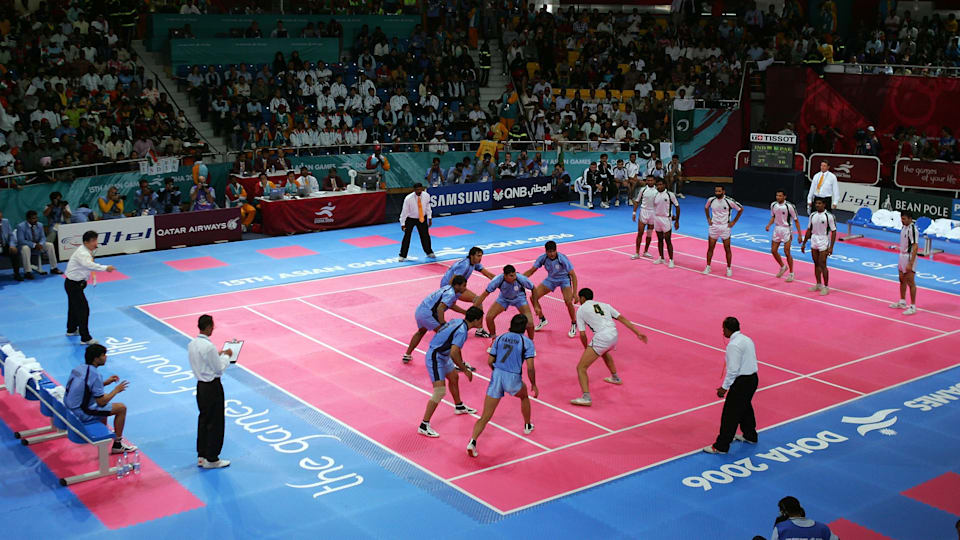How kabaddi went from local to global on the sidelines of the Olympics

A sport of the soil and closely connected to Indian culture, kabaddi found global renown after appearing as an exhibition sport just before the 1936 Olympics.
Backed by a 4000-year-old rich history, kabaddi has always been an intrinsic part of the Indian sports culture.
Holy texts hint at kabaddi being played by Hindu God Krishna during his childhood and the sport also finds its mention in the epic, Mahabharata. Accounts of Gautam Buddha playing kabaddi as a recreational sport are also common.
Owing to its deep-rooted ties with Indian culture, kabaddi was always a popular game in India’s rural areas. Such is its mass appeal in the villages across the country that kabaddi has often been unofficially dubbed as the national sport of India.
But in recent times, India’s indigenous sport has surged in popularity in urban settings, thanks to kabaddi being a regular part of the Asian Games and the recently-formed Pro Kabaddi League (PKL) – a franchise-based tournament – in India.
However, the spark that galvanised kabaddi’s transition from being a rural past-time to becoming an international spectacle traces back to the Berlin 1936 Olympic Games in Germany or the build-up to the Games to be precise.
Winning over Berlin
Though not in the official programme at the 1936 Olympics, kabaddi found a stage in Berlin as an exhibition just preceding the Games.
A 35-member contingent from a little-known physical education institute called Hanuman Vyayam Prasarak Mandal (HVPM) based out of Amravati city of Maharashtra travelled to Berlin on the organisers’ invitation to showcase a bunch of indigenous sporting disciplines.
The itinerary included a variation of kabaddi, then known as hu tu tu in India.
One of the key figures responsible for facilitating the invitation was HVPM’s then vice-president Dr Siddhanath Kane.
An executive committee member of the Indian Olympic Association (IOA), Kane wrote to Dr Carl Diem, the chief organiser of the 1936 Berlin Summer Games, about his institute’s wish to demonstrate kabaddi in Berlin.
With the world assembled in the German capital for the Olympics, it would be the perfect opportunity to showcase India’s very own sport to a global audience.
Diem, a known admirer of yoga, was already familiar with kabaddi due to his friendship with another Indian named Laxmanrao Kokardekar, who was studying in Berlin during the Thirties.
The connection streamlined the process and Dr Kane’s request was approved. Kabaddi, mallakhamb (a type of Indian gymnastics using a vertical pole) and a few other traditional sports were put on the agenda.
The HVPM team performed at the Congress of Physical Education - a programme to discuss physical education and witness demonstrations of traditional sports - in Berlin just before the Olympics and played a 40-minute exhibition match on the premises of the city's university.
The fast-paced physical nature of the sport struck a chord with the local populace and it’s said that the team had to play two more matches due to popular demand.
Olympic athletes participating at the Berlin Games were also among the crowd who witnessed the kabaddi matches.
VB Kaptan, an Indian journalist who covered the team’s exploits in Berlin, later wrote, “Kabaddi received a great reception. This game has become so popular in the camp that various teams are engaged in learning its technique.”
It’s often reported that kabaddi was a demonstration sport for the 1936 Olympics but the fact is that it was never an official part of the Games.
The sport was, in fact, showcased in Berlin as an exhibition performance just prior to the Summer Games. However, it was enough to give kabaddi the international exposure it needed to start growing globally.
Rise of kabaddi
Asian countries, in particular, took a huge interest in the sport in its early years but was soon followed by European and African nations.
Kabaddi was included as an official demonstration sport at the first-ever Asian Games in 1951 and then again in 1982. Since 1990, it has been a regular medal event at these continental Games.
The formation of the International Kabaddi Federation (IKF) – the world governing body for kabaddi - in 2004 with a long-term goal of establishing kabaddi as an Olympic sport also gave a further push to the sports’ global appeal.
Three men’s kabaddi World Cups have been held since, in 2004, 2007 and 2016 with the Indian kabaddi team winning gold medals in all three and Iran finishing runners-up on each occasion.
Kabaddi in Asian Games has also been dominated by India, with the country clinching top honours in each of the editions held from 1990 to 2014.
With women’s kabaddi being included in the Asian Games from 2010, India won gold at the 2010 Guangzhou and 2014 Incheon Games.
The 2018 Asian Games in Jakarta, though, marked a tectonic shift in the world of kabaddi. Iran won gold medals in both the men’s and women’s categories after defeating India in both the finals.
It was the first time India failed to claim the top podium spot at any major global kabaddi event, demonstrating how the sport is gradually becoming more and more competitive with every passing year.